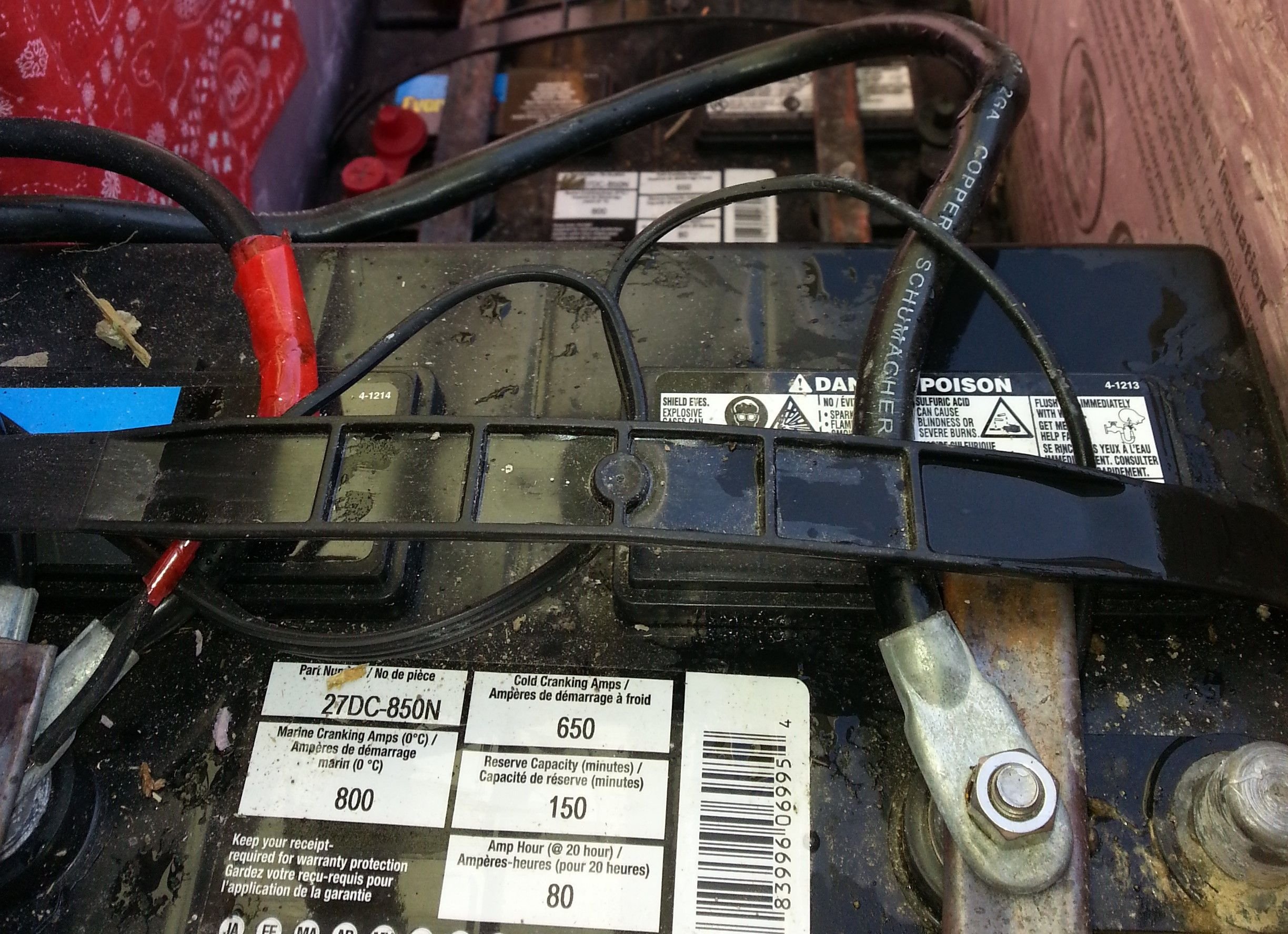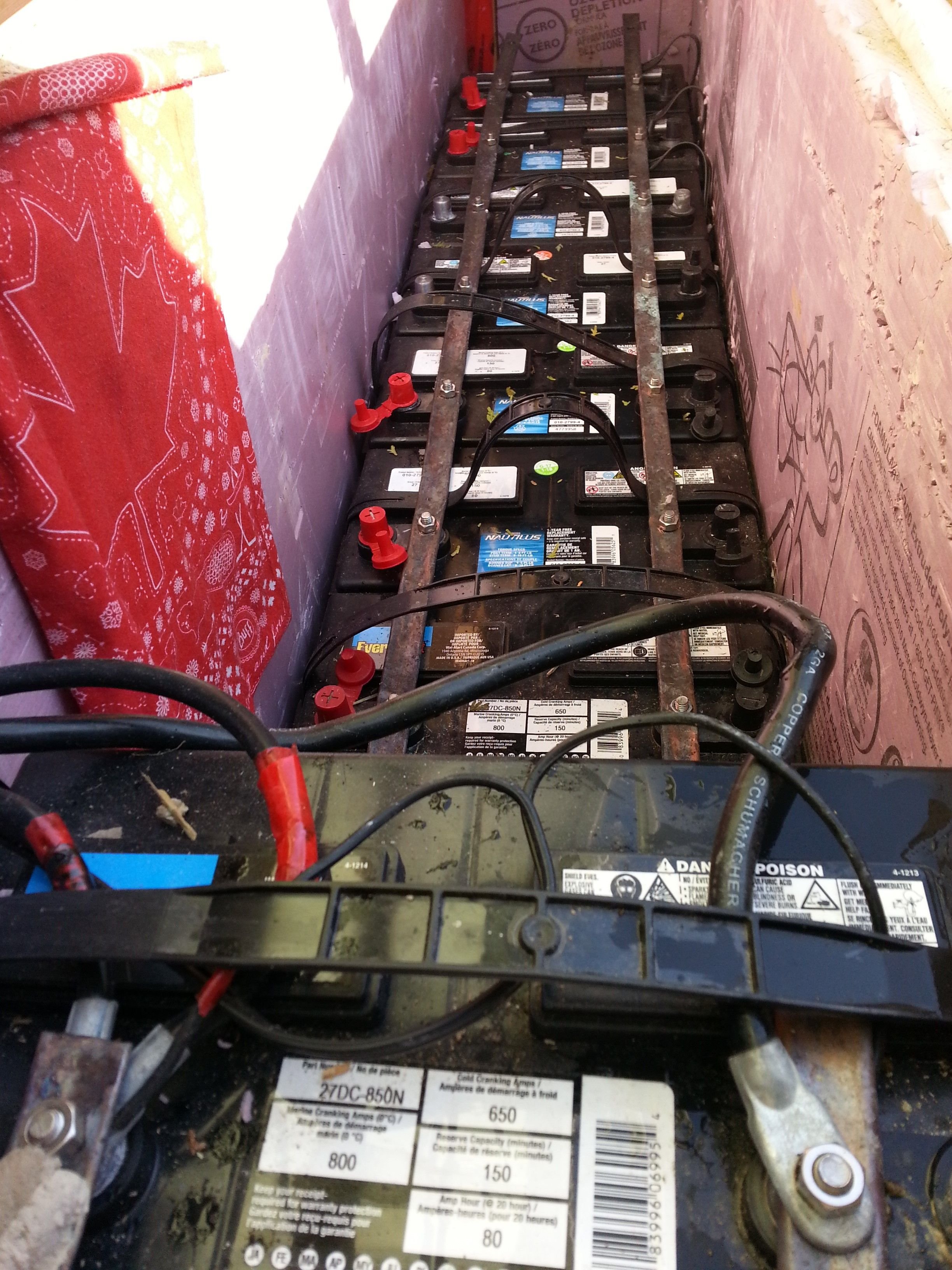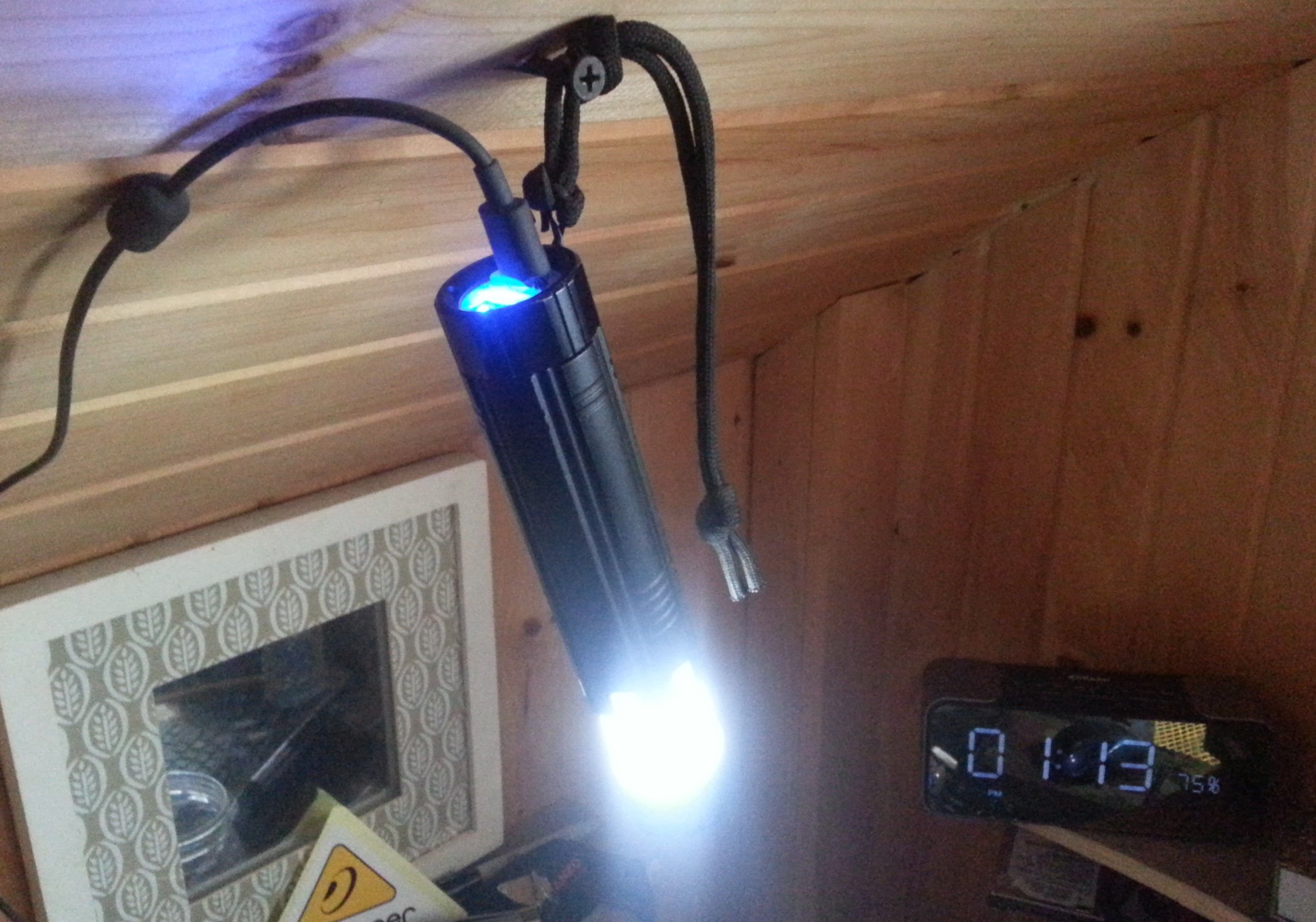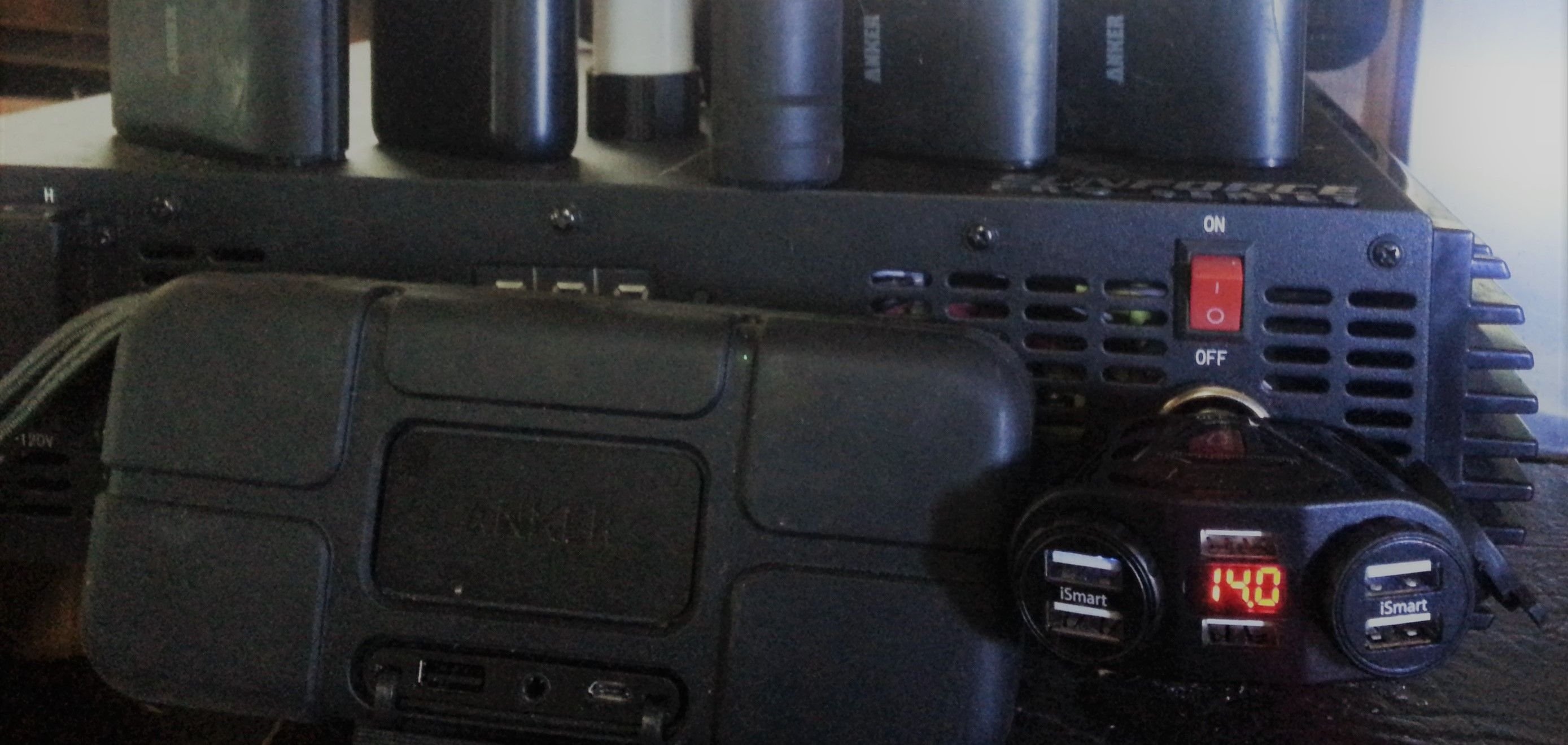Deep Cycle Lead Acid Batteries are the most commonly used batteries for Off-grid Solar, Backup Systems, Boats, and RVs. There are many different types of Lead Acid batteries. Each type has a unique construction, method of charging, and price point. Flooded is the traditional engine starting lead acid battery, there's also Sealed, VRLA, AGM, and GEL. Deep Cycle lead acid batteries can discharge up to 80% of their rated amp hours without being damaged. Common car starting lead acid batteries can only discharge 30% of their rated amp hours without risk of damage to the batteries. Lithium Ion batteries in comparison can discharge 100%. Lithium ion batteries are great for a home battery bank, but very pricey right now, unless you build one yourself.

My cabin came with four 12 Volt deep-cycle lead-acid flooded 80 Amp hour capacity batteries, so my choice for the Voltage, Type, and Capacity of each battery was easy. Flooded lead acid batteries are also readily available to be purchased at your local hardware or car repair store. I've since added six more 80 Ah batteries, for a total of ten - making it a 800 Amp hour battery bank. It is important that each of the batteries in the battery bank are the same voltage, type, and capacity, or there will be trouble.
Deep cycle lead acid batteries can discharge up to 80% when running 12 volt items, but a heavy load on an Inverter from larger household standard appliances will cause the Inverter to turn off at about 50% of battery capacity. This brings the cabin battery bank's usable 12 Volt invertable electricity storage to about 400 Amp hours.
 !
!
When the Sun or the Electrical Power Grid goes down, a battery bank can keep the electricity flowing. A twenty-four hour capacity battery bank would be a good size goal to start with. With a solar power setup, the sun will shine or at least overcast the next day to charge up the battery bank. For extended cloudy days or a grid power outage, a backup generator and charger works great for topping off the batteries during the day - so you can use electricity from the batteries at night.

To Know What Size Battery Bank You Need, First Calculate Your Daily Minimum Electrical Power Needs.
For many, refrigeration would be at the top of the list. One of the few appliances that need to be plugged in day and night. In a power grid down situation, if you have a natural gas furnace, the furnace and blower can be run on backup power. Well water pumps could be ran too, but I would wait until day or when the generator is running to fill up containers with water.
Chargeable devices like tools, phones, laptops, USB battery banks, Bluetooth speakers, flashlights, clocks, AM/FM radios, 2-way radios, GPS devices, Geiger counters, drones, and many more chargeable devices can be very useful for cutting back on night time non-essential electricity needs.
In the picture below you can see my USB chargeable flashlight lamp and Bluetooth speaker clock. If the power ever unexpectedly cuts out, they just keep running. If battery bank power is low at night, I will unplug the charging cords and run them off their own batteries.

The picture below is an example of how to collect and charge USB Battery Banks #LikeABoss.

Watts = Voltage X Amps
Amps = Watts / Voltage
Amp Hours per Day Usage: Calculation Example
We will use a Refrigerator and a Gas Heat Furnace Blower from the Efficiency Smart Guide page for this example. There are many other common household appliances on the Efficiency Smart page:
https://www.efficiencysmart.org/media/default/docs/programs/meter-loan/efficiency-smart-usage-chart.pdf
Refrigerator, 19.0 - 21.4 cu. ft., 2001-2008:
533 Kilowatt hours per year / 365 days per year = 1.460 Kilowatt hours per day
1.460 Kilowatt hours per day / 1000 = 1460 Watt hours per day
1460 Watt hours per day / 12 Volts = 121.67 Amp Hours per day
Gas Heat Furnace Blower:
498 Kilowatt hours per year / 365 days per year = 1.364 Kilowatt hours per day
1.364 Kilowatt hours per day / 1000 = 1364 Watt hours per day
1364 Watt hours per day / 12 Volts = 113.67 Amp Hours per day
121.67 Amp Hours per day for Fridge
113.67 Amp Hours per day for Furnace Blower
= 235.34 Amp Hours total required per day
240 Amp Hours from a battery bank could work well for these requirements, but remember that when using an inverter with the battery bank you will only be able to withdraw about 50% of the capacity - so we double the size of the Battery Bank to 480 Amp Hours.
Have a great day!
You may find some of my previous posts useful:
@jackdub/back-acres-how-to-pull-start-a-small-engine
@jackdub/tech-talk-get-more-power-out-of-your-off-grid-system-with-single-voltage-conversion
